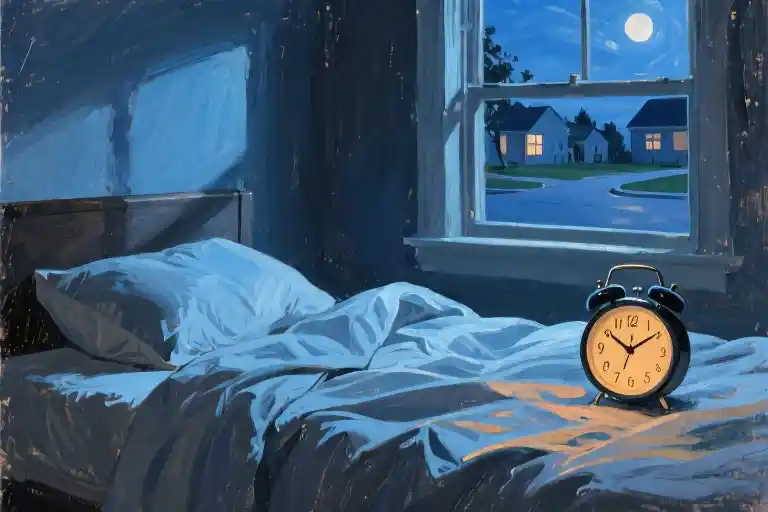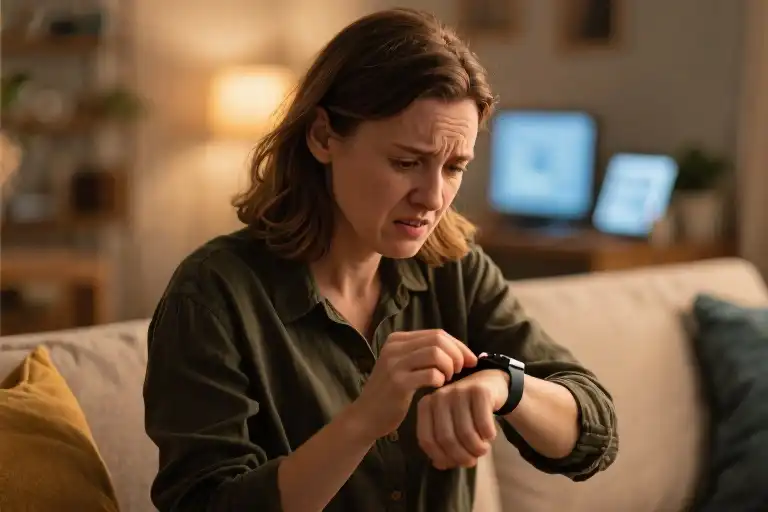The summer camp counselor’s exasperated sigh still echoes in my memory. There I was, an eleven-year-old with a Sharpie-drawn handlebar mustache, chewing on grass blades like some kind of suburban cow. Meanwhile, back at school, teachers praised my ability to vanish into books for hours, that rare student who actually enjoyed silent reading time. The disconnect between these two versions of me wasn’t just confusing—it became the central mystery of my childhood.
Neurodivergence manifests differently when you’re the kid who can recite entire Harry Potter chapters but can’t sit through a math worksheet. My ADHD didn’t look like the bouncing-off-walls stereotype; it was the way I’d hyperfocus on dinosaur facts for weeks, then completely space out during multiplication tables. The time my friends convinced me to prank call a random number from the phone book? Classic executive dysfunction—I went along because saying no required more mental energy than dialing those digits.
What fascinates me now, twenty years later, isn’t just how my symptoms flew under the radar, but how the system failed to connect the dots. That well-meaning teacher who suggested an evaluation planted a seed that never grew—not because the concern wasn’t valid, but because no one knew how to recognize high-functioning ADHD in children who weren’t disruptive. The diagnosis paperwork probably still exists in some forgotten filing cabinet, while I spent decades developing elaborate coping mechanisms to compensate for working memory deficits I didn’t even know I had.
This is the paradox of invisible neurodivergence: the very adaptations that help us survive—the hyperfocus, the people-pleasing compliance, the ability to ‘pass’ as neurotypical—become barriers to understanding ourselves. When your symptoms don’t match the textbook examples, you internalize the dissonance as personal failure rather than neurological difference. That math class struggle wasn’t laziness; it was my brain’s inability to regulate attention for unstimulating tasks. The grass-chewing? A sensory-seeking behavior common in underdiagnosed ADHD presentations.
The cultural script told me ADHD meant struggling academically and being constantly in motion. No one mentioned how it could also look like reading three books in a weekend while your untouched homework gathered dust, or how emotional dysregulation might surface as sudden tears over a misplaced pencil. We need new narratives that acknowledge neurodiversity’s full spectrum—stories where a child’s Sharpie mustache isn’t just a silly phase, but one piece of a much larger puzzle.
The Broken Mirror: Childhood ADHD’s Hidden Faces
The summer camp counselor’s exasperated sigh still echoes in my memory. “Why would you eat grass when there’s perfectly good food in your lunchbox?” she demanded, plucking blades from my clenched fist. I shrugged, my Sharpie-drawn mustache cracking as I grinned. At that moment, I couldn’t explain how the monotony of group activities made my skin crawl, how chewing something – anything – temporarily quieted the buzzing in my limbs.
This same child could vanish into books for hours, emerging only when my mother physically shook my shoulders. Teachers praised my reading stamina while ignoring how I’d count ceiling tiles during math lessons, the numbers squirming off the page like ants. The disconnect wasn’t willful disobedience; it felt like operating two separate brains – one capable of laser focus under specific conditions, the other hopelessly distractible when unstimulated.
Behavioral contradictions defined my childhood. The girl who meticulously organized her book collection by color would later follow classmates into foolish pranks, like that afternoon we dialed random numbers from the yellow pages. While I froze and hung up (already overwhelmed by the social pressure), the incident revealed a pattern: my attention regulation depended entirely on context. Structured activities felt suffocating, yet self-directed pursuits brought unnatural intensity.
Neuroscience now explains this as ADHD’s situational variability – our brains aren’t uniformly inattentive, but struggle with dopamine regulation. Activities providing immediate rewards (reading adventurous stories) engage us differently than delayed-gratification tasks (learning multiplication tables). Back then, these fluctuations just made me feel broken. Why could I recite entire novel passages but forget basic instructions? Why did stillness feel physically painful some days yet achievable during captivating activities?
These contradictions eventually caught a teacher’s notice. Mrs. Henderson pulled my parents aside after observing my whiplash-inducing transitions between hyperfocus and daydreaming. The recommendation for ADHD testing should have been a turning point. Instead, it became the first of many forgotten clues in my neurodivergence puzzle – ironically proving the very executive dysfunction it sought to address.
The diagnosis slipped through the cracks of a system designed to recognize only stereotypical presentations. No one considered that a child who loved reading might need support, that quiet fidgeting (tracing patterns on desks, shredding pencil erasers) could indicate inattentive-type ADHD. We missed the truth hiding in plain sight: neurodivergence doesn’t always look like the disruptive boy stereotype. Sometimes it’s the girl drawing on her face, not out of rebellion, but because the physical sensation grounds her racing thoughts.
These childhood fragments form a cracked mirror of unrecognized symptoms. Each reflection – the grass-chewing, the abandoned math worksheets, the forgotten evaluation – showed pieces of ADHD’s less visible face. It would take decades to assemble them into a coherent picture, one where my brain’s contradictions finally made sense.
The Diagnosis I Forgot
The teacher’s note was written in that particular shade of blue ink reserved for school memos – the color that made even birthday party invitations feel like official documents. “Your child shows remarkable focus in subjects he loves,” it began, before landing the punchline, “but we recommend an ADHD evaluation.”
I remember the way my mother’s eyebrows knitted together when she read it at the kitchen table, her fingers leaving faint grease marks on the mimeographed paper. What I don’t remember is the evaluation itself. There’s no recollection of sitting in a doctor’s office, no mental image of checklists or cognitive tests. Just a void where a diagnosis should be.
The Missing Pieces
Three decades later, this memory gap would become my first concrete clue. While researching ADHD after my adult diagnosis, I stumbled upon a study about working memory deficits. The researchers described how neurodivergent brains often fail to encode experiences that lack emotional significance. That teacher’s note? Filed away. The actual evaluation? Never made it past my brain’s spam filter.
The irony wasn’t lost on me – the very symptom that obscured my diagnosis became its confirmation. ADHD doesn’t always look like the hyperactive boy bouncing off classroom walls. Sometimes it’s the quiet girl who can recite entire novel chapters but forgets her own medical history.
System Blind Spots
Looking back, the warning signs were written in disappearing ink:
- The way I’d hyperfocus on library books while my math homework went untouched
- How classroom chatter felt like radio static, except when discussing my latest obsession
- That time I organized my entire sticker collection by color gradient instead of preparing for a spelling test
The system failed to connect these dots because they didn’t form the expected picture. Teachers saw a child who loved reading and assumed focus wasn’t an issue. Doctors heard about good grades and dismissed attention concerns. Meanwhile, my brain kept its own erratic rhythm – alternating between marathon concentration sessions and what I now recognize as executive dysfunction.
The Weight of Not Knowing
That forgotten diagnosis cast a long shadow. Through high school honors classes and college all-nighters, I developed elaborate coping mechanisms no one recognized as such:
- Color-coded binders to compensate for working memory gaps
- Self-imposed deadlines set days before actual due dates
- Strategic seat selection in lectures to minimize distractions
What might have been different if someone had explained why focus felt like tuning a radio with greasy knobs? How many friendships strained by forgotten plans could have been saved by earlier understanding? The questions linger, but so does this hard-won wisdom: sometimes the most important diagnoses aren’t the ones we receive, but the ones we eventually uncover for ourselves.
The Cost of Camouflage: Two Decades of Seeking Answers
Compensation strategies became my survival toolkit long before I knew they had a name. In college lectures, I’d arrive thirty minutes early to claim the front-row seat – not out of eagerness to learn, but because sitting anywhere else meant losing the thread of the professor’s words to every rustling backpack and squeaking chair. This wasn’t diligence; it was damage control for an attention system that couldn’t filter background noise like neurotypical brains do.
Work environments magnified these adaptations. My first office job featured a carefully curated collection of fidget toys disguised as desk ornaments. The smooth worry stone in my pocket, the textured binder clips I’d snap rhythmically during meetings – these weren’t quirks but essential tools to anchor my wandering focus. Colleagues praised my “attention to detail” when I delivered error-free reports, unaware it took me three times as long as others because I’d compulsively review each sentence, terrified of missing what everyone else seemed to catch effortlessly.
Social situations demanded different masks. Dinner parties became exercises in mental gymnastics, tracking conversations while resisting the urge to mentally redesign the host’s inefficient kitchen layout. I developed what I now recognize as ADHD-specific coping mechanisms: memorizing three conversation topics beforehand, practicing active listening cues (“mmhmm,” head nods), excusing myself periodically to jot down thoughts before they evaporated. These weren’t personality traits but exhausting performance art.
The professional consequences accumulated like snowflakes forming an avalanche. Six jobs in eight years – not because I couldn’t do the work, but because sustaining the camouflage drained me completely. Each resignation letter cited vague “personal reasons,” when the truth was I couldn’t admit even to myself that standard office environments felt like trying to breathe underwater. The pattern only broke when a therapist finally connected my chronic exhaustion with the forgotten childhood evaluation.
Relationships suffered under this unrecognized neurodivergence too. Partners misinterpreted my hyperfocus on new hobbies as disinterest in them. Friends grew frustrated when I’d forget plans we’d made days earlier, assuming it reflected how little I valued their time. The cruelest irony? I’d developed elaborate reminder systems for work tasks but remained oblivious to using those same strategies for personal connections.
Time blindness – that peculiar ADHD distortion of temporal perception – warped my adult life most profoundly. Deadlines existed in two categories: “now” and “not real.” My brain treated 2pm meetings with the same urgency as theoretical future events, leading to last-minute scrambles that coworkers misread as procrastination rather than a fundamental neurological difference in perceiving time’s passage.
These adaptations came at tremendous cognitive cost. The mental energy spent mimicking neurotypical behaviors meant constant depletion. I’d collapse after social events, needing days to recover from the strain of monitoring eye contact, suppressing fidgeting, and manually regulating my facial expressions. What others considered basic social skills required my full executive function capacity.
The breakthrough came unexpectedly during a routine physical. My doctor, reviewing a stress-related complaint, asked about childhood behavioral evaluations. When I mentioned the long-forgotten ADHD suggestion, her pen paused mid-note. “That explains your coping mechanisms,” she said simply, and in that moment twenty years of confusion crystallized into understanding. The masks I’d painstakingly crafted weren’t character flaws – they were ingenious neurological workarounds.
We talk about ADHD’s challenges but rarely acknowledge the creativity of these survival strategies. My hyperawareness of others’ reactions developed into professional empathy that serves me well in client relations. That tendency to deep-dive into random topics? It’s become a valuable research skill. The very traits that made conventional paths difficult now fuel my success in neurodivergent-friendly work.
Perhaps the greatest cost of undiagnosed ADHD wasn’t the struggles themselves, but the years spent misattributing them to personal failure. Learning these patterns had a name didn’t eliminate the challenges, but it transformed them from moral defects into manageable neurological traits. That shift – from shame to self-understanding – made all the difference.
Rewriting the ADHD Narrative
The medical community once pictured ADHD as a hyperactive boy bouncing off classroom walls. This stereotype left millions of us – especially girls and high-achievers – navigating life without a map for our peculiar brains. My childhood Sharpie mustaches and math-class daydreams weren’t rebellion; they were neurological Morse code my teachers couldn’t decipher.
The Quiet Storm in Your Skull
Modern neuroscience reveals what 90s diagnostics missed: ADHD isn’t an attention deficit, but an attention misallocation. That laser-focus during marathon reading sessions? The same prefrontal cortex glitch causing your math class agony. Brain scans show our neural pathways light up like overcompensating fireworks – intensely focused here, completely dark there. This explains why I could analyze Shakespeare for hours but lost my lunchbox daily.
Three key differences define quiet ADHD:
- Interest-based nervous system (not reward-driven)
- Hyperfocus tunnels (not just distractibility)
- Internalized restlessness (less physical hyperactivity)
Six Subtle Signs You Missed
Your childhood report cards might say “pleasure to teach” while your diary pages scream confusion. Watch for these camouflaged signals:
- The librarian paradox – Devouring books cover-to-cover but zoning out during verbal instructions
- Situational chameleon – Classroom angel, summer camp mischief-maker
- Time blindness – Alternately early (anxiety) or chronically late (time perception gaps)
- Clumsy creativity – Brilliant ideas executed haphazardly
- Emotional pendulums – Intense feelings that confuse even you
- Memory mosaics – Vivid recall of childhood smells but forgetting yesterday’s meeting
Your Brain’s User Manual
Understanding your neurotype changes everything. That “laziness” you’ve internalized? It’s dopamine-seeking behavior. The social missteps? Working memory lapses, not character flaws. When I finally saw my brain scans showing abnormal frontal lobe activity, decades of self-blame dissolved.
Practical starting points:
- Download the ASRS-5 adult ADHD screener from WHO
- Join CHADD’s virtual support groups
- Try “body doubling” for task initiation
- Schedule focus blocks matching your natural rhythm
That child eating grass blades wasn’t being difficult – she was self-regulating. Your quirks aren’t flaws, but fingerprints of a differently wired, equally valid mind. The world’s finally learning to speak our language.
The blades of grass I chewed during those endless summer afternoons weren’t just a childish whim—they were Morse code from my brain, desperate signals in a language nobody had taught me to decipher. For twenty years, those messages went unanswered, lost between society’s narrow definitions of what ADHD should look like and my own quiet adaptations to a world that didn’t fit.
Now I recognize the pattern: the Sharpie mustaches drawn during camp downtime, the paralyzing freeze during that silly prank call, the ability to vanish into books for hours while math worksheets might as well have been written in hieroglyphics. These weren’t random childhood quirks but the fingerprints of a neurodivergent mind trying to navigate systems designed for different kinds of brains.
That teacher who suggested an evaluation when I was eleven saw something most adults missed—the inconsistency wasn’t disobedience, but neurology. The cruel irony? I forgot the diagnosis almost immediately, my working memory glitching exactly as the manuals would predict. ADHD hid itself in plain sight, using my own brain’s wiring as camouflage.
If you’ve ever felt like a collection of contradictions that nobody else understands—the person who can hyperfocus for hours yet loses their phone three times a day, who craves stimulation but dreads unexpected changes—you might be reading these words with a strange tightness in your chest. That recognition isn’t coincidence. The child who ate grass to cope with understimulation grows into the adult developing elaborate coping mechanisms to function in meetings, the one whose “gifted” label early on made later struggles feel like personal failures.
Neurodivergence doesn’t disappear when we learn to mask it better. Those blades of grass were real hunger, just not the kind anyone thought to feed. Today, the tools exist to finally understand that language—online screenings from organizations like CHADD, therapists specializing in adult ADHD, communities rewriting the narrative around what it means to think differently. The diagnosis that slipped through my fingers decades ago doesn’t have to escape yours.
When we expand our understanding of ADHD beyond the hyperactive boy disrupting class, we make space for all the quiet manifestations—the daydreamers, the overachievers, the people who learned to apologize for their brain’s rhythm before they knew it was simply dancing to a different beat. My sharpie mustaches have faded, but the truth they hinted at remains: difference isn’t deficit. Sometimes the clearest signals come in the most unexpected forms—even blades of grass, even forgotten diagnoses, even decades later.





